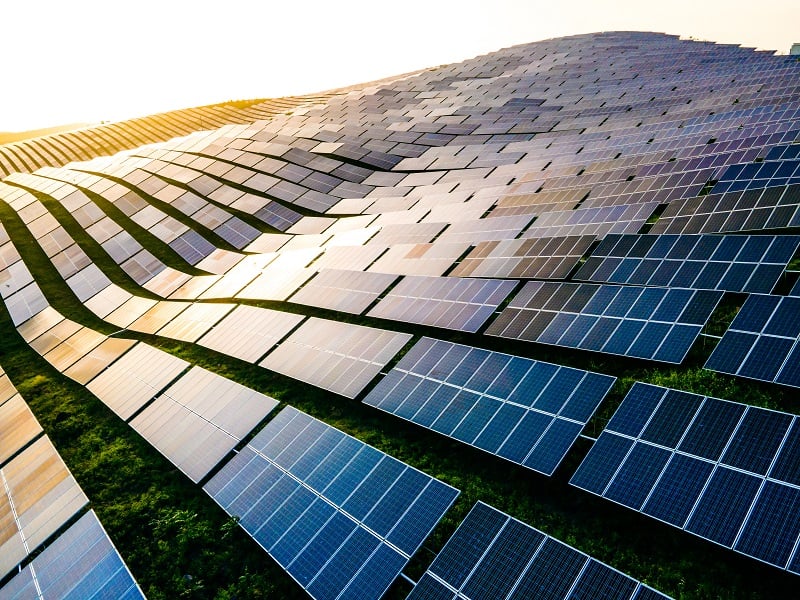
2025 was set to be a challenging but interesting year for investors addressing climate risk and opportunity and that has certainly proved to be the case.
Even as the climate agenda has become more complex for all stakeholders, including investors, it was impossible to ignore the energy and grounds for optimism at our annual IIGCC Summit. More than 450 people from across the climate and investing landscape joined us, in person and online, to kickstart London Climate Action Week.
Admittedly, a keynote interview with Al Gore helps attendance. Yet more widely, the day’s discussions showed just how much how the industry has matured, now informed by several years of implementation experience and by the development of robust guidance and regulatory frameworks across jurisdictions.
It’s clear that while the world has evolved, so too have investors.
Adaptation and resilience in the spotlight
Physical climate risk was the standout topic of the day, and the week for that matter. While the urgent need to build adaptation and resilience (A&R) has long been apparent, focus to date has centred on mitigation.
However, as global average temperatures continue to rise, the impact of physical climate risks rises with them. Investors recognise this growing threat, which poses material risks to investment portfolios. This is the case even if the Paris Agreement goals are met and becomes all the more material if they are not.
As well as addressing risk, investment in A&R can offer opportunities. Every USD 1 billion invested in adaptation against coastal flooding leads to a USD 14 billion reduction in economic damages, the United Nations Environment Programme reported in its Adaptation Gap 2024, which contains many more such examples.
It revealed that international public adaptation flows between 2021 and 2022 recorded the largest year-on-year increase since the Paris Agreement, though funding remains well short of the levels required. These findings make clear that there must be a dual-track approach to mitigation and A&R as the cost of inaction rises.
The business case for investing in resilience
How each investor approaches A&R differs, but most are in the early stages of their journey. To help, we intend to shift the narrative from purely risk to one that recognises opportunity, pursuing standardisation for assessments and metrics, and demonstrating the link between system-level resilience and asset level value.
Central to this is the Physical Climate Risk Appraisal Methodology, which was updated and released for consultation to coincide with the Summit. Informed by industry, PCRAM 2.0 supports investors to identify physical climate risks at an underlying asset level, understand their materiality, and explore adaptation options to the maximum practical extent possible.
International public adaptation flows between 2021 and 2022 recorded the largest year-on-year increase since the Paris Agreement.
The methodology helps to demonstrate the business case for investing in resilience – for example protecting long-term investment value, maintaining credit worthiness and insurability, or enhancing portfolio performance.
Firmly case study led, PCRAM 2.0 includes four new examples provided by investors and partners. Two consider solar assets, the third a maritime transport crossing and associated port infrastructure, and the fourth a warehouse asset, advancing A&R thinking for the real estate sector.
Resilience to physical climate risk is key to mitigation
The solar asset case studies in particular highlight the need to consider mitigation and A&R in lockstep. Climate solutions like solar panels must be resilient to physical climate risks, in this case heat stress or acute hailstorms, to remain operational and provide the energy that reduces demand for fossil fuels.
New guidance, supplementary to the popular Net Zero Investment Framework, aims to support investors considering investment in climate solutions, forming part of wider discussions on capital mobilisation to support the transition.
In the context of mitigation, we define climate solutions as activities, goods or services that, according to credible pathways, must scale significantly to enable the global economy to reach net zero. Our hope is that a standardised definition supports momentum in this space.
Building on PCRAM’s practical approach, the Climate Resilience Investment Framework (CRIF) was released to help investors develop individual climate A&R plans. The first of its kind, CRIF sets out the latest thinking on the levers available to investors to meet their climate resilience goals, including recommended action points, and target setting underpinned by PCRAM.
CRIF can act as a powerful communications tool between asset owners and asset managers, or for investors with the wider ecosystem. It currently offers guidance for real estate and infrastructure, and will be expanded over time to include sovereign, sub sovereign, and corporate assets.
Laser focused on financial materiality
Despite challenges, as a European-based membership organisation we continue to see consistent levels of ambition from investors and ongoing efforts to integrate climate risks and opportunities across their strategies and processes.
Our efforts will centre on overcoming the barriers to implementation by continuing to provide pragmatic, targeted and implementation-focused resources. We help our members make the case for climate action, with financial materiality front and centre.
As investors get on with the hard work this implementation entails, we now look ahead to COP30 in Brazil, where the Presidency has made clear the urgent need to elevate adaptation and resilience across discussions. IIGCC will use the conference to advocate for an enabling policy environment that meets this ambition.
Until then, make no mistake about it: the transition is happening.
If you’d like to take part in our working groups and help to shape future resources, get in touch today to become a part of IIGCC. Follow our free LinkedIn newsletter for a monthly list of the top five must-reads.